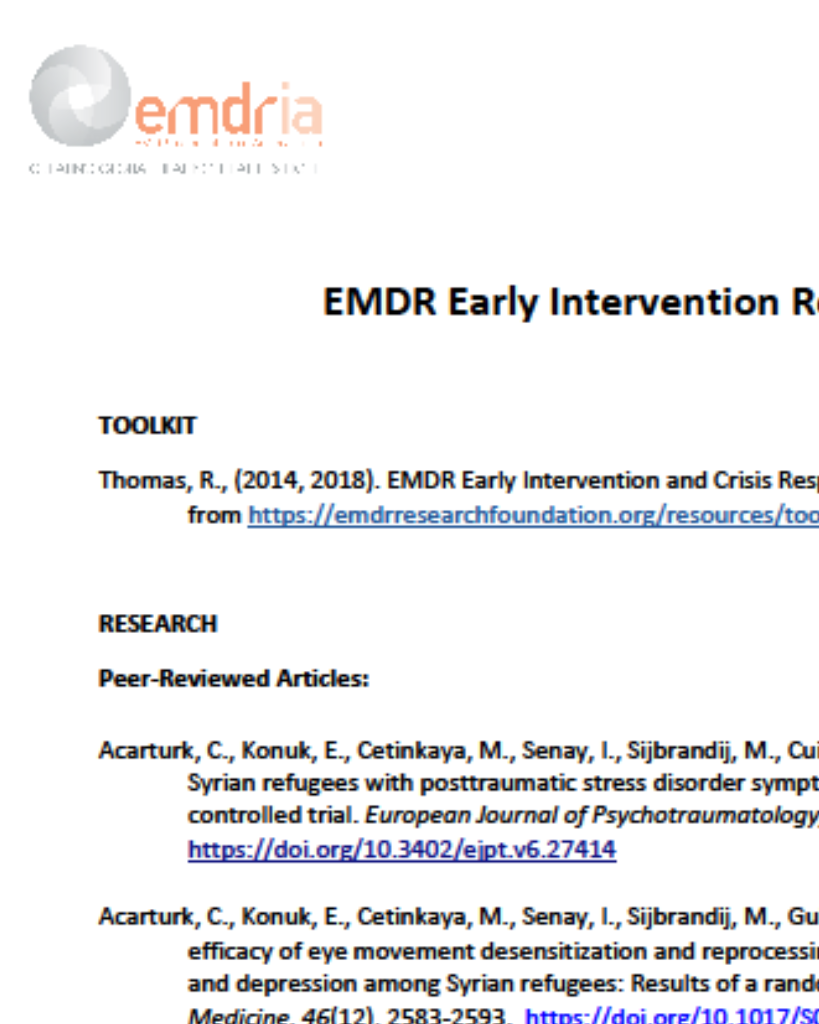Neuroanatomical changes after eye movement desensitization and reprocessing (EMDR) treatment in posttraumatic stress disorder
Some studies have suggested that psychotropic drugs may promote hippocampus neurogenesis and reverse the decrease in hippocampus volume.
Article Abstract
Letter. “Several authors have found smaller hippocampal volumes in patients with PTSD and some have suggested that psychotropic drugs may promote hippocampus neurogenesis and reverse the decrease in hippocampus volume. However, the only study that has investigated the effects of psychotherapy on hippocampus volume failed to show a volumetric increase after effective psychotherapy. EMDR is a standardized psychotherapy for amelioration of traumatic sequelae.”
—Description from publisher
Article Access
Open Access
Bossini, L., Fagiolini, A., & Castrogiovanni, P. (2007). Neuroanatomical changes after eye movement desensitization and reprocessing (EMDR) treatment in posttraumatic stress disorder. Journal of Neuropsychiatry and Clinical Neuroscience, 19(4), 475-476. https://doi.org/10.1176/jnp.2007.19.4.475
Date
November 1, 2007
Creator(s)
Letizia Bossini, Andrea Fagiolini, Paolo Castrogiovanni
Topics
PTSD
Practice & Methods
Mechanisms of Action, Neurobiology
Extent
2 pages
APA Citation
Bossini, L., Fagiolini, A., & Castrogiovanni, P. (2007). Neuroanatomical changes after eye movement desensitization and reprocessing (EMDR) treatment in posttraumatic stress disorder. Journal of Neuropsychiatry and Clinical Neuroscience, 19(4), 475-476. https://doi.org/10.1176/jnp.2007.19.4.475
Audience
EMDR Therapists, Other Mental Health Professionals
Language
English
Content Type
Article
Access Type
External Resource, Open Access





